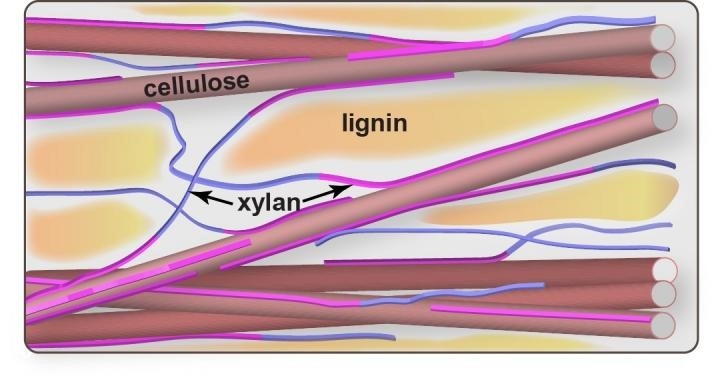While research was conducted for cellulosic ethanol production, findings may have implications for corn silage and other stover forages.
January 23, 2019

New research on the U.S.'s most economically important agricultural plant — corn — has revealed a different internal structure of the plant than previously thought, and while the research was conducted to improve ethanol production efficiencies, the findings may have implications for corn silage and other stover forages.
The study was published Jan. 21 in Nature Communications.
Louisiana State University department of chemistry assistant professor Tuo Wang and colleagues investigated an intact corn plant stalk at the atomic level using high-resolution techniques. The research team includes postdoctoral researcher Xue Kang and graduate students Malitha Dickwella Widanage and Alex Kirui.
According to the announcement from Louisiana State, it was previously thought that cellulose — a thick and rigid complex carbohydrate that acts like a scaffold in corn and other plants — connected directly to a waterproof polymer called lignin. However, Wang and his colleagues discovered that lignin has limited contact with cellulose inside a plant. Instead, the wiry complex carbohydrate called xylan connects cellulose and lignin as the glue.
It also was previously thought that the cellulose, lignin and xylan molecules are mixed, but the scientists discovered that they each have separate domains and that these domains perform separate functions, the announcement said.
"I was surprised. Our findings actually go against the textbook," Wang said.
Lignin, with its waterproof properties, is a key structural component in plants. Significant research has been done on how to break down the plant structure or breed more digestible plants to produce ethanol or other biofuels. However, this research has been done without the full picture of plants' molecular structure.
"A lot of work in ethanol production methods may need further optimization, but it opens doors for new opportunities to improve the way we process this valuable product," Wang said.
This means a better enzyme or chemical can be designed to more efficiently break down the core of a plant's biomass. These new approaches also can be applied to biomasses in other plants and organisms as well.
In addition to corn, Wang and his colleagues analyzed three other plant species: rice, switchgrass that is also used for biofuel production and the model plant species Arabidopsis, which is a flowering plant related to cabbage. The scientists found that the molecular structure among the four plants are similar.
They discovered this by using a solid-state nuclear magnetic resonance spectroscopy instrument at Louisiana State and at the National Science Foundation's National High Magnetic Field Laboratory in Tallahassee, Fla. Previous studies that used microscopes or chemical analyses have not shown the atomic-level structure of the native, intact plant cell architecture, the researchers said.
Source: Louisiana State University, which is solely responsible for the information provided and is wholly owned by the source. Informa Business Media and all its subsidiaries are not responsible for any of the content contained in this information asset.
You May Also Like



